Full Text Searchable PDF User Manual
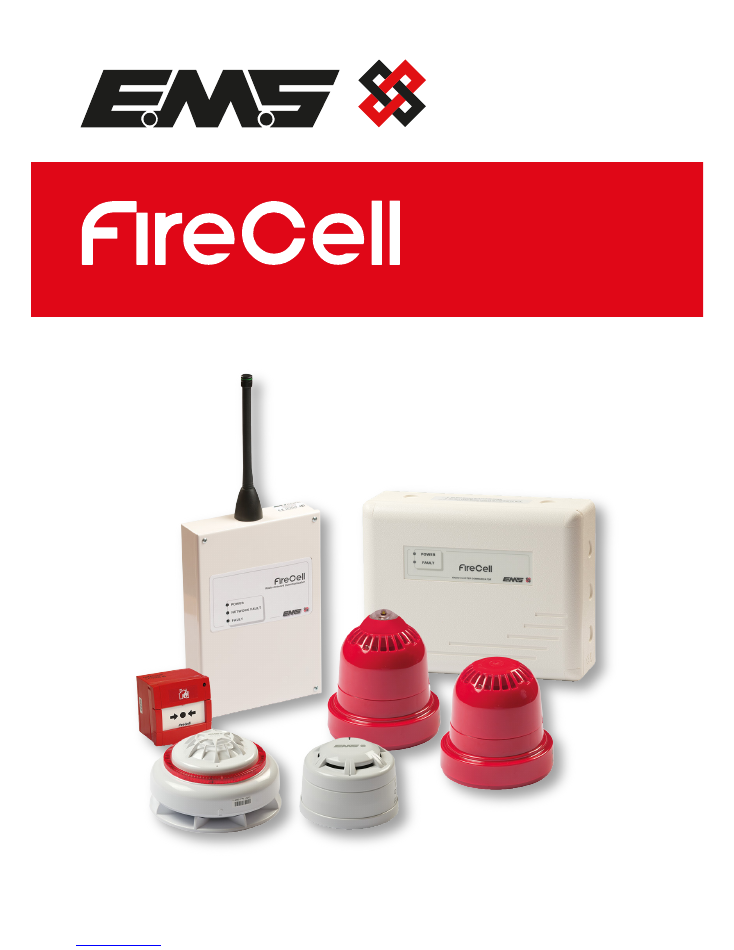
Setup Guide
©2015 EMS Security Group Ltd. All rights reserved. MK99 Iss6b 17/07/15 AJM
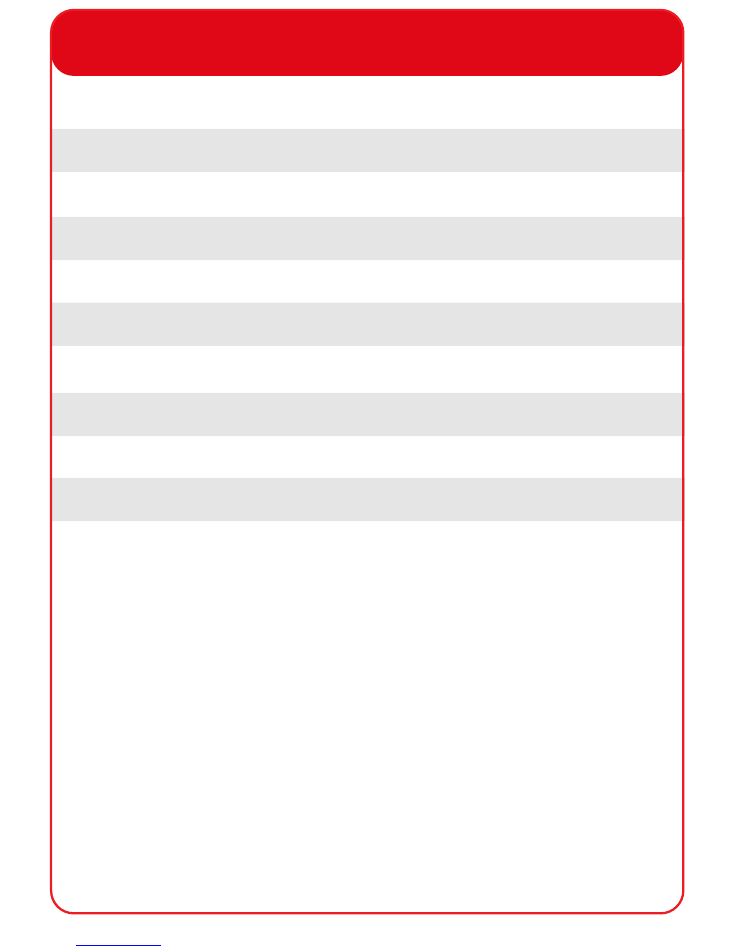
2
Contents
1 Install Control Panel & Radio Hub
2 Install & Log On the RCCs
3 Assign the RCCs
4 Add and Install the Wireless Devices
5 Assign the Devices
6 Control Panel Programming
7 Check Device Signal Levels
8 Test the System
Hub Menu Structure
Fault Rectification
How to Improve Signal Levels
3
4
5
6
7
8
9
10
11
12-14
15
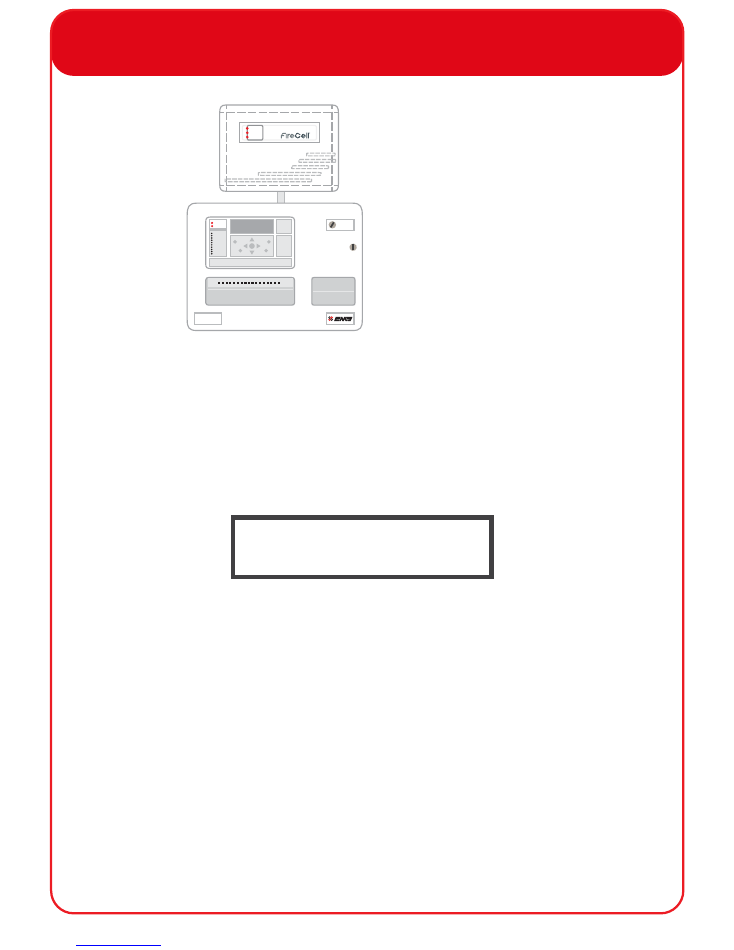
1 Install Control Panel & Radio Hub
POWER
FAULT
SYSTEM
FAULT
FIRE
Fire Alarm Control
Radio Hub
Control Panel
The Control Panel and the Radio Hub require installation into their proposed
locations. (See the Radio Hub Installation Guide for more information).
Once installed and with power applied, the Radio Hub will show the following
default screen:
TOT001 A000 F000
Where:
TOT001 = The total number of devices logged to the Hub (including the Radio
Hub itself).
A000 = The number of alarm conditions on the system.
F000 = The number of faults currently on the system
Note: As default, the Radio Hub will be set as device address 001 on loop 1. This
can be changed if required. Refer to the Programming Manual (MK98) for more
information.
3
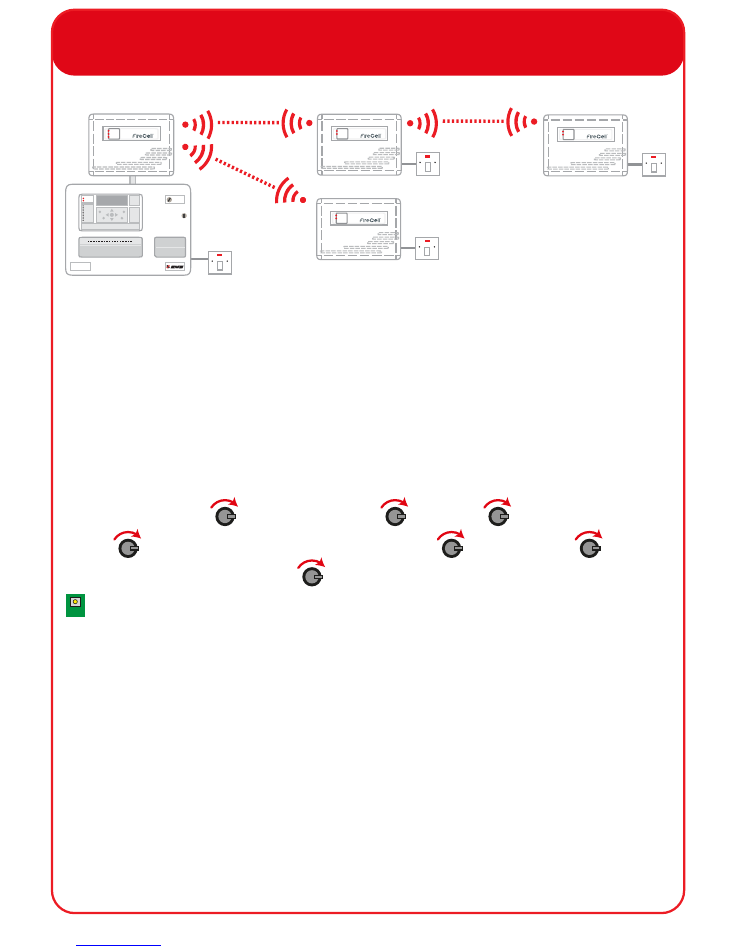
2 Install & Log On the RCCs
The Radio Cluster Communicators (RCCs) require installing in their proposed
locations. Refer to the Radio Cluster Communicator Installation Guide (TSD053) for
more information.
A unique ident number is shown on the side of each RCC. This should be noted as
this is required when logging on (adding the RCC to the Radio Hub).
From Front Display Hub/RCC Options Add RCC Select Desired Signal
Path
*
Select Desired Loop & Device Address Add By Ident Add Dev
12345 Y? ’Enter the RCCs ident New Addr L1 A002.
To Exit
*
= If the RCCs signal path is to be direct to the Radio Hub, then Radio Hub should
be selected. If the RCC’s signal path is via another RCC, then the relevant RCC will
need to be selected. Each option can be chosen by turning the rotary control.
BACK
POWER
FAULT
SYSTEM
FAULT
POWER
FAULT
FIRE
Fire Alarm Control
POWER
FAULT
POWER
FAULT
230V AC
230V AC
230V AC
230V AC
4
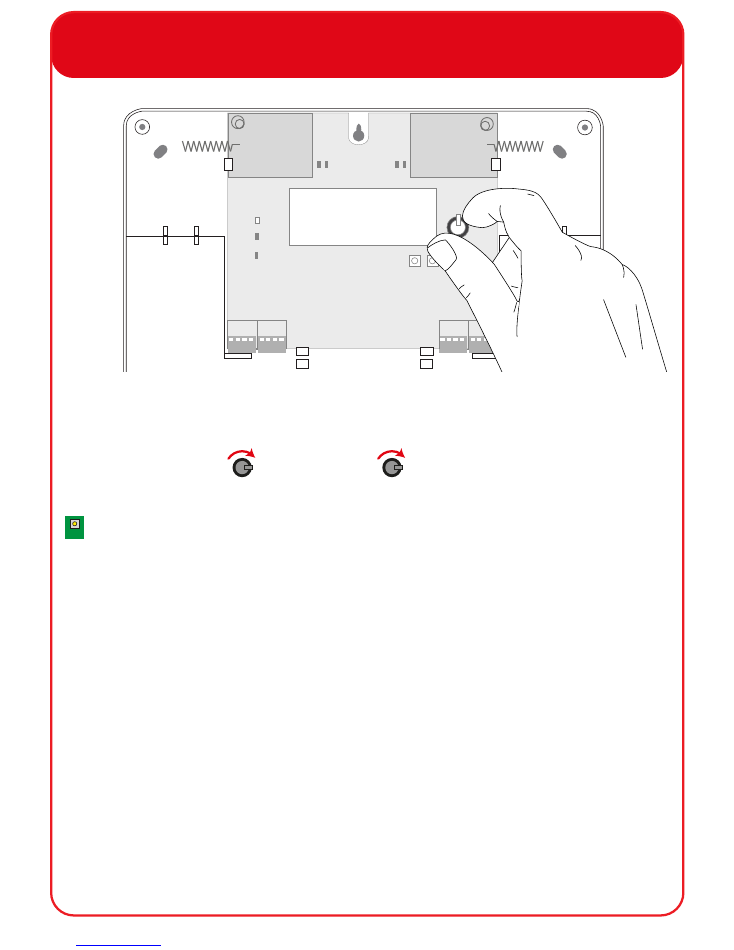
3 Assign the RCCs
TX
RESET
LOGON
RX
BACK
HEALTHY
FAULT
SYS FAULT
LOOP 1
+
-
IN OUT IN OUT
+
-
LOOP 2
+
-
IN OUT IN OUT
+
-
LOOP 3
+
-
IN OUT IN OUT
+
-
LOOP 4
+
-
IN OUT IN OUT
+
-
RF1
RF2
TX
RX
Assign Device
The newly added RCCs should now be assigned.
From Unassigned Dev
Assign Device Dev 000 of 001
changing to
Done
001 of 001
(once complete).
To Exit
BACK
5
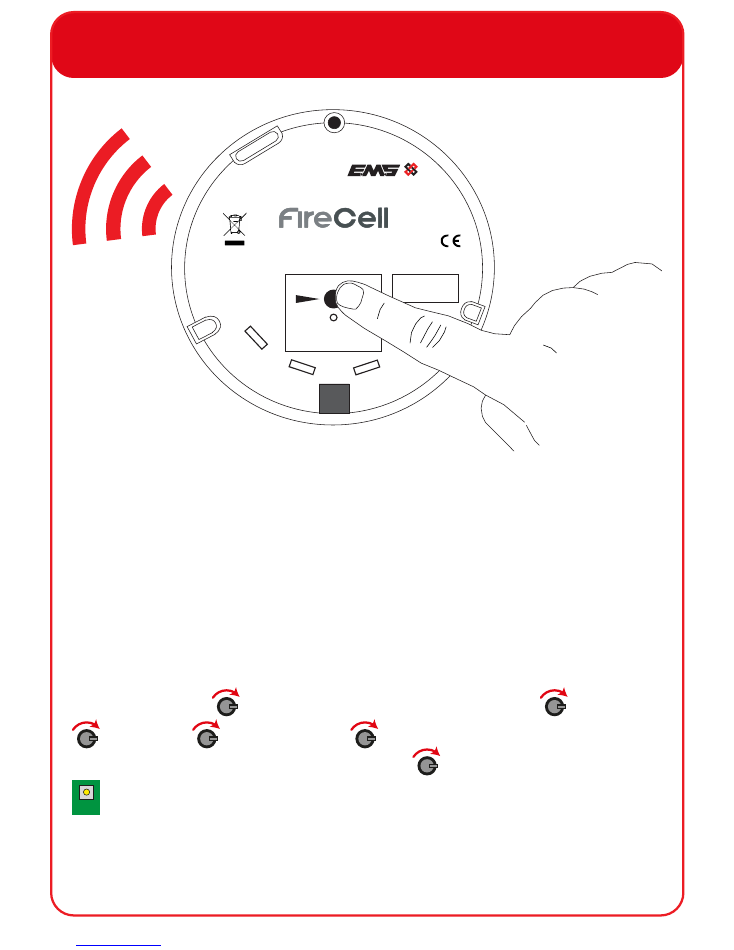
4 Add and Install the Wireless Devices
The Wireless Devices can be added to their relevant RCCs, either by pressing the
device’s log on buttons or by entering the device’s unique ident number. If
adding by ident, always make a note of the devices ident numbers and device
type prior to installation and refer to the Programming Manual (MK98) for
further details.
Note: Ensure the Wireless Devices are powered before logging on to the system.
See the relevant installation guide for more information.
To add devices by log on;
From Front Display
Add New Device
Select Desired
RCC 01 Set Loop 1
.
Addr 003 Add By Log On Press Dev Log On
‘press the devices
log on button, followed by
Add Dev 03456 Y? New Addr L1 A003.
To Exit
The device has now been added to the Radio Hub and should be installed in its
location, prior to the next step of assigning the device to its relevant RCC. See
the relevant devices installation instructions, for more information.
www.emsgroup.co.uk
Wireless Detector Base
PRESS HERE TO
LOG ON
IDENT
BACK
6
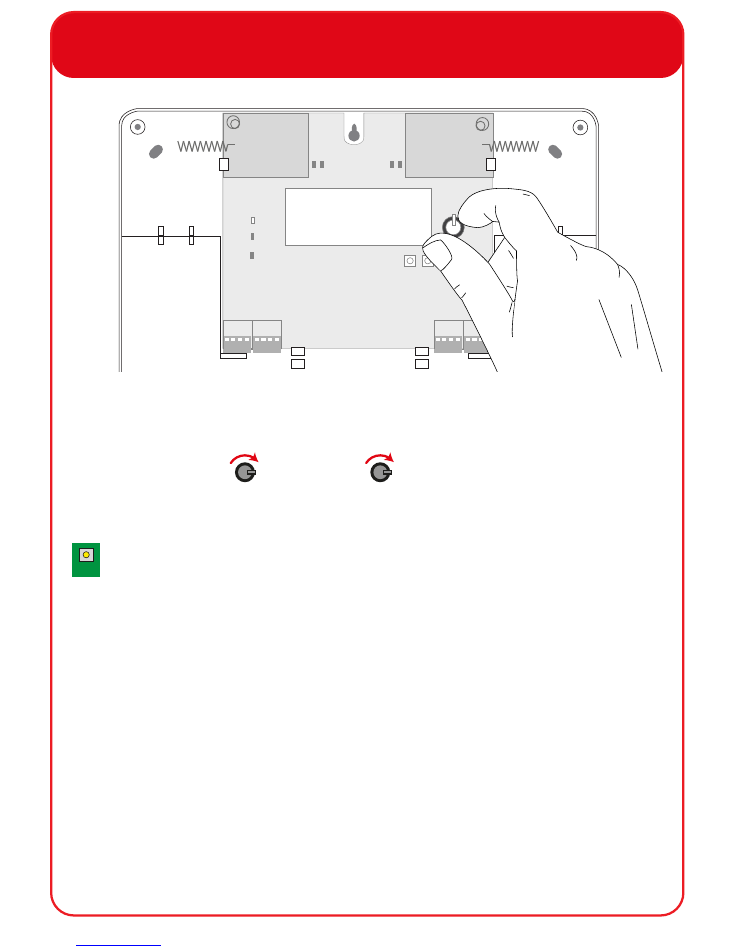
The newly added devices must now be assigned.
From Unassigned Dev Assign Device Dev 000 of 003 changing to Done
003 of 003 (once complete)
To Exit
BACK
5 Assign the Devices
TX
RESET
LOGON
RX
BACK
HEALTHY
FAULT
SYS FAULT
LOOP 1
+
-
IN OUT IN OUT
+
-
LOOP 2
+
-
IN OUT IN OUT
+
-
LOOP 3
+
-
IN OUT IN OUT
+
-
LOOP 4
+
-
IN OUT IN OUT
+
-
RF1
RF2
TX
RX
Assign Device
7
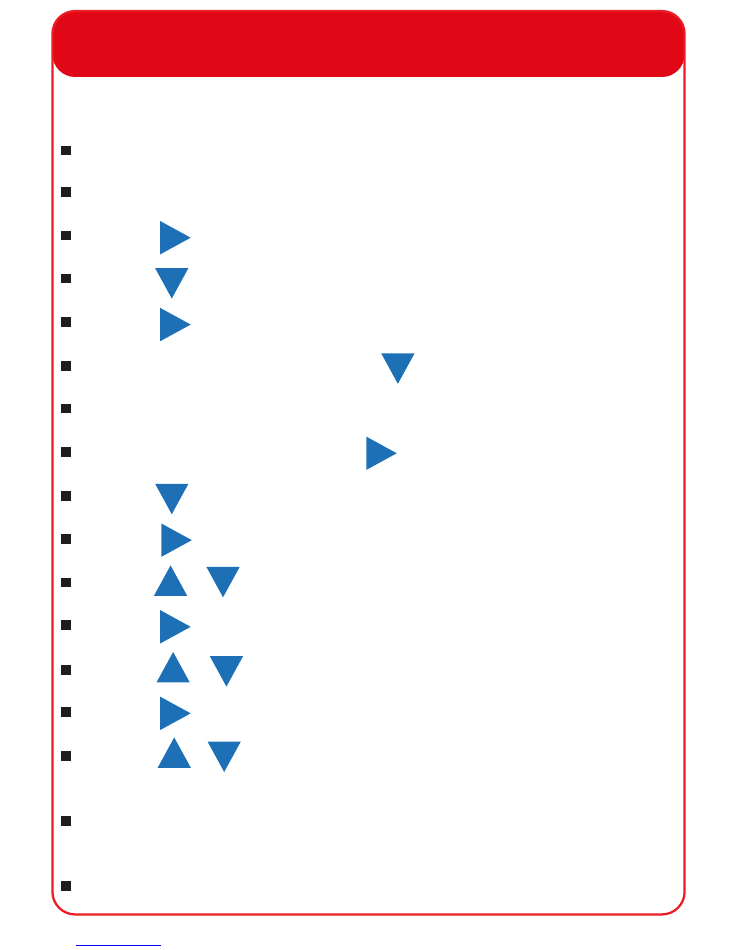
6 Control Panel Programming
Program the Control Panel; ensuring Loop number and addresses programmed at
the Radio Hub correspond to that programmed at the Control Panel.
Ensure write switch is set to enable.
Turn the key switch to the enabled position.
Press the button to enter the menu.
Press the button to scroll down until ‘Access Level 3’ is highlighted.
Press the button to enter the menu.
Now to enter the pin number, press the button four times (entering 3333).
Press the ‘Enter’ button to enter the pin.
Enter the ‘Edit Config’ menu with the button.
Press the button to scroll down the menu until ‘Add device’ is highlighted.
Press the button to enter the menu.
Press the & buttons to highlight the desired device loop number.
Press the button to select the loop required.
Press the & buttons to scroll through the available address numbers.
Press the button to select the address required.
Press the & buttons to scroll through the device types until the
required type is shown.
Press the ‘Enter’ Button to enter. Confirmation of the addition to the system
should now be shown.
Once complete, press the ‘Exit’ button to escape the menu.
2
2
2
2
2
2
1
1
1
3
3
3
3
3
3
8
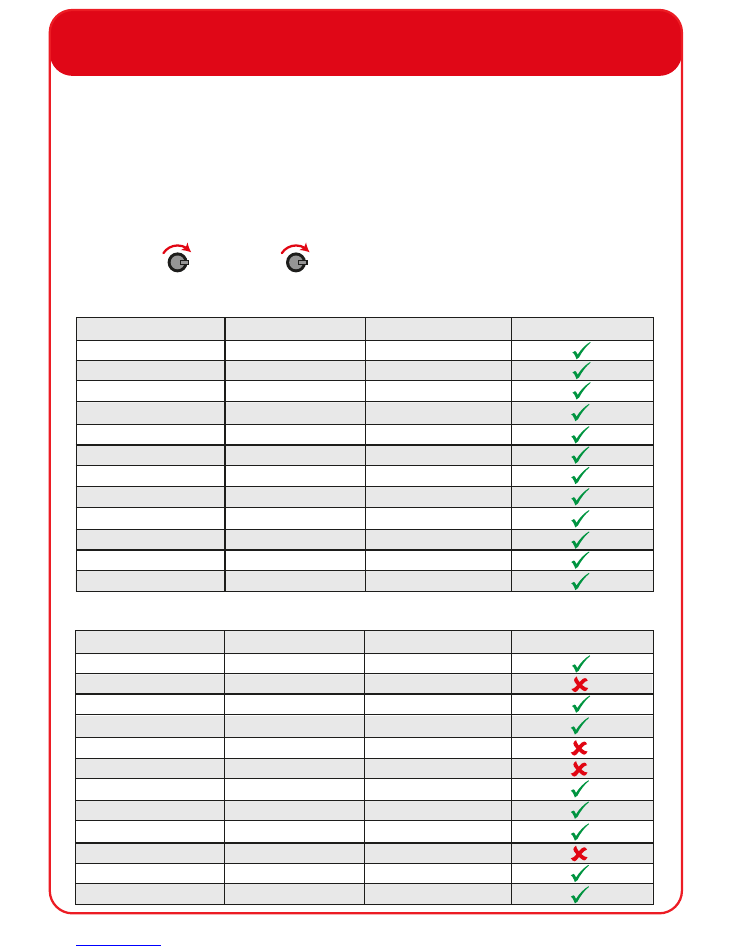
7 Check Device Signal Levels
The signal levels for all wireless devices and RCCs must be checked. This menu will
display the signal levels in dB for each wireless device and RCC over a 24 hour
period, listed in Loop and Address Number order. After the system has been
running for a 24 hour period, the device signal levels should display 24dB or
above and the RCC signal levels should display 20dB or above. If any devices are
under the signal level requirements, check the flowchart On How to Improve
Device Signal Levels section for guidance.
Front Display
Advanced Global Sig Stat
Examples of good signal levels are shown below:
Device Type
Radio Hub
RCC
Optical Detector
Optical Detector
Manual Call Point
Optical Detector
Optical Detector
Manual Call Point
Optical Detector
Heat CS Detector
Optical Detector
Heat A1R Detector
Loop / Address
Loop 1 Address 1
Loop 1 Address 2
Loop 1 Address 3
Loop 1 Address 4
Loop 1 Address 5
Loop 1 Address 6
Loop 1 Address 7
Loop 1 Address 8
Loop 1 Address 9
Loop 1 Address 10
Loop 1 Address 11
Loop 1 Address 12
Shown On Display
N/A
L1 A002 21dB
L1 A003 27dB
L1 A004 45dB
L1 A005 35dB
L1 A006 38dB
L1 A007 30dB
L1 A008 32dB
L1 A009 24db
L1 A010 45dB
L1 A011 45dB
L1 A012 45dB
Acceptable Level
Device Type
Radio Hub
RCC
Optical Detector
Optical Detector
Manual Call Point
Optical Detector
Optical Detector
Manual Call Point
Optical Detector
Heat CS Detector
Optical Detector
Heat A1R Detector
Loop / Address
Loop 1 Address 1
Loop 1 Address 2
Loop 1 Address 3
Loop 1 Address 4
Loop 1 Address 5
Loop 1 Address 6
Loop 1 Address 7
Loop 1 Address 8
Loop 1 Address 9
Loop 1 Address 10
Loop 1 Address 11
Loop 1 Address 12
Shown On Display
N/A
L1 A002 19dB
L1 A003 27dB
L1 A004 45dB
L1 A005 17dB
L1 A006 23dB
L1 A007 30dB
L1 A008 32dB
L1 A009 24db
L1 A010 21dB
L1 A011 45dB
L1 A012 45dB
Acceptable Level
Examples of both good and bad signal levels are shown below:
9
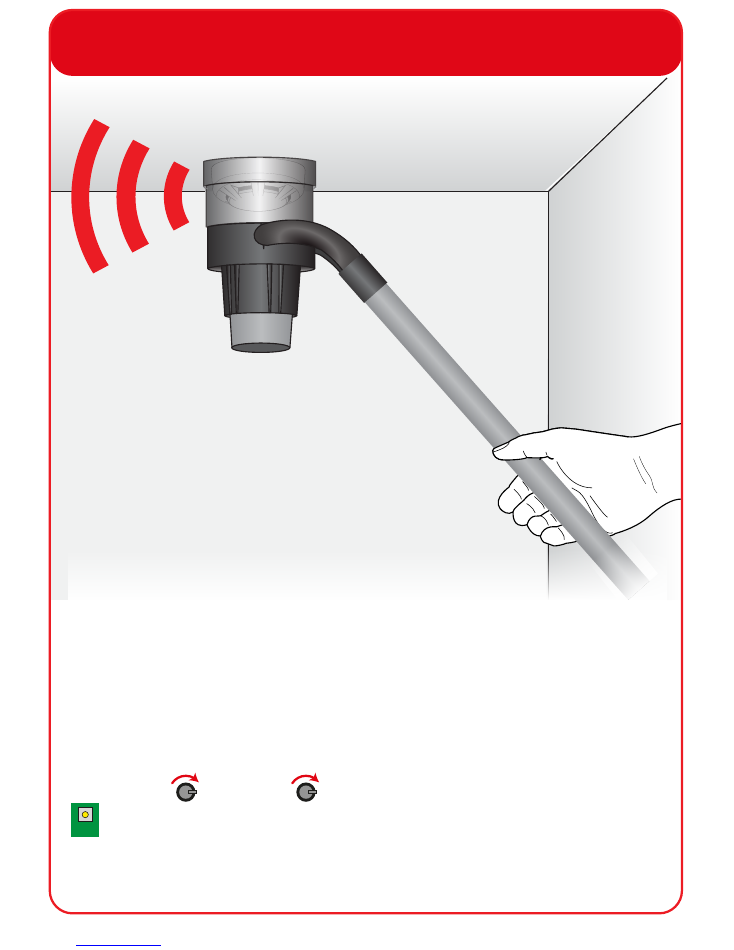
8 Test the System
Note: loops can be entered into fast test for ease of testing. This allows the
detectors on the selected loops to be triggered into an alarm condition quicker
than normal. The led on the device will flash to indicate it is in this fast test mode.
A time period of between 1 and 30 minutes is selectable which decrements and
is then re-generated on a fire alarm event. The devices automatically come out
of fast test mode when the timer expires or the fast test mode is exited.
Front Display
Advanced Start Fast Test
To Exit
BACK
10
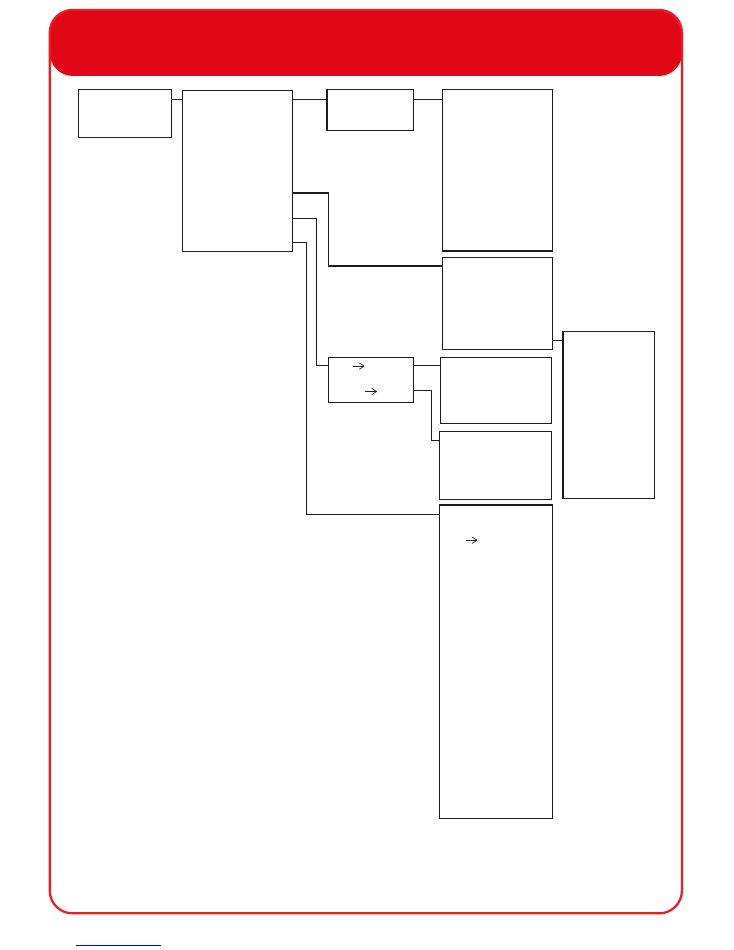
Front Screen Text
or
Unassigned Dev
Device Status
Add New Device
Assign Device
Remove Device
Hub/RCC Options
Radio Channels
Advanced
Device Loop /
Address / Status /
Type
Fault Status
Alarm Status
*
Battery Level
Signal Level
Manual Update
RCC Number & Ident
Software Version
Set Hub Addr
Add RCC
Remove RCC
Hub / RCC Status
Change Address
Dev RCC Listing
Global Batt Stat
Global Sig Stat
Individual Test
Start Fast Test
RCC Comms Path
Chg RCC CommPath
Replace RCC
†
Sounder Mode
Analogue 35 mode
Audio Detect
Batt Smoothing
Currently Used
Manual Select
Auto Select
Fault Status
Signal Level
Manual Update
Background Level
Radio Channels
Ident
Software Version
*
Alarm Status shown as I/O Status for Input/Output device types.
†
Programming features not yet released in this version of software.
RCC RCC Ch
Device RCC Ch
Currently Used
Manual Select
Auto Select
Hub Menu Structure
11
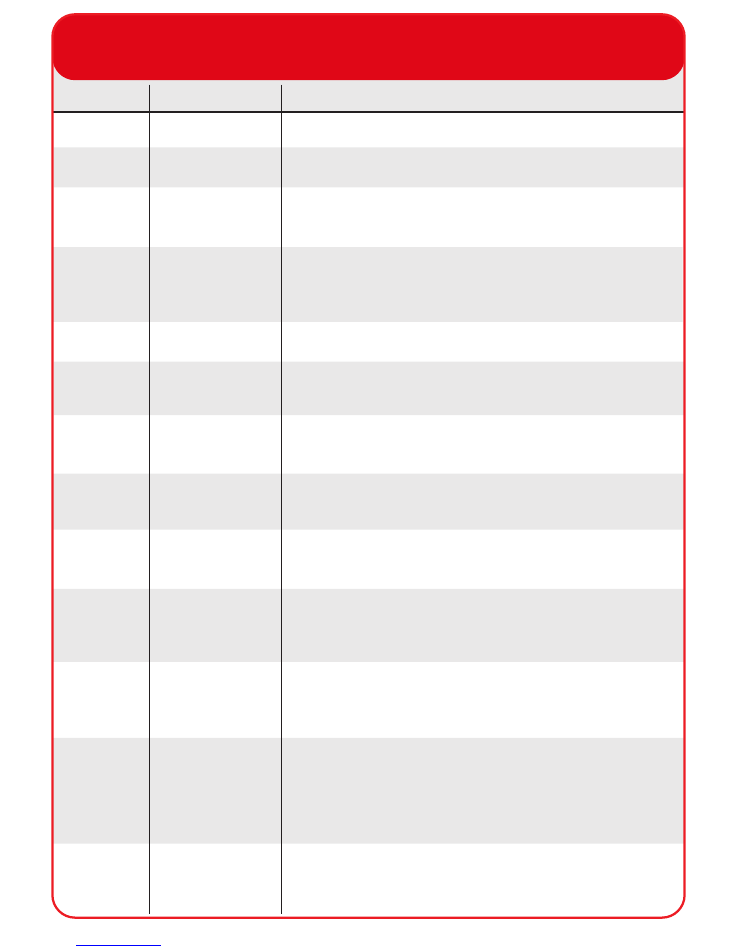
12
Fault Rectification
Rectification Process
Check battery connections and voltages.
Check the RCCs mains supply.
Check that the device is correctly assembled. Failing this, it is
recommended that the detector is replaced.
Check the devices audio monitoring switches are set
correctly. See the devices installation instructions for more
information.
Try resetting the Radio Hub.
Check that the device is correctly assembled. The fault will
clear upon successful relocation.
Check that the device is correctly assembled. The fault will
clear upon successful relocation.
Check that the device is correctly assembled. The fault will
clear upon successful relocation.
Check the 20k end of line resistor is in place and that
connections are secure.
Check for the 47k end of line resistor when measuring
between the centre pin and the outer screen of both aerials
cables and that connections are secure.
Check for the 47k end of line resistor when measuring
between the centre pin and the outer screen of both aerials
cables and that connections are secure.
Has any electrical equipment recently been installed in close
proximity of the Radio Hub. If so it may need to be moved to
an acceptable distance. See Radio Hub Installation
Instructions for details.
Replace all batteries. See the installation instructions for
more details on specified batteries.
Device Type
All
RCC
Detector
Sounder
Radio Hub
Detector
Sounder
All
I/O Units
Radio Hub
RCC
Radio Hub
All
Symptom
Battery missing
Mains fail
Head fault
No audio output
Receiver failure
Head missing
Head missing
Tamper
Input short/open
circuit
Aerial tamper
Aerial tamper
Radio interference
Batteries low
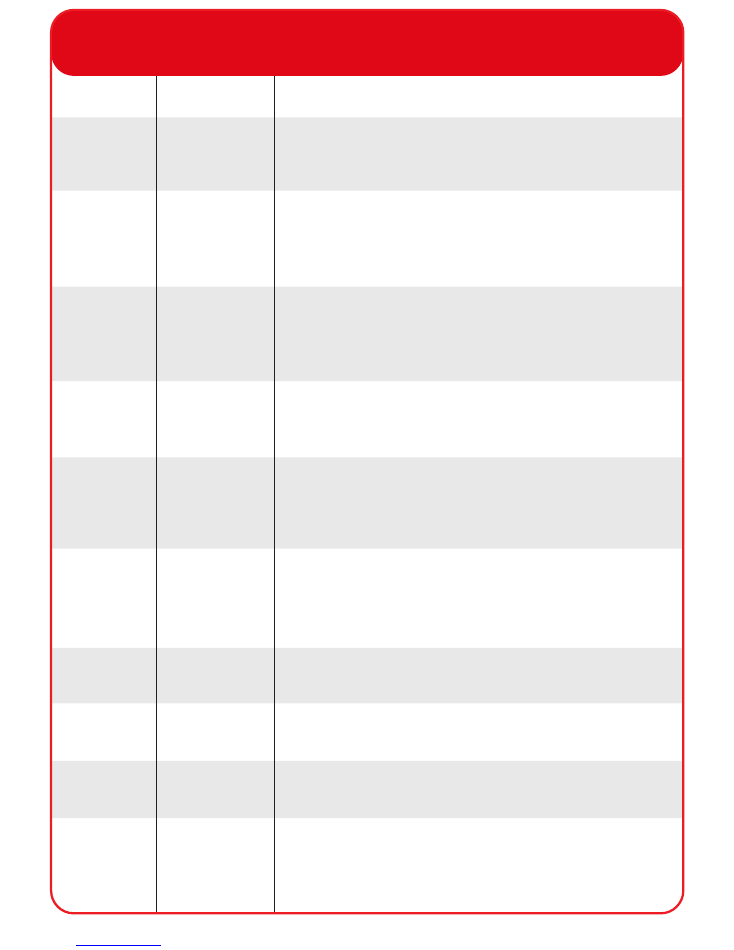
Fault Rectification Continued
13
Check the RCCs battery connection voltage.
Check devices location to ensure no visible cause can be
seen. Check device signal level in the Global Sig Stat menu.
Refer to the ‘How to improve device signal levels’ section.
Has any electrical equipment recently been installed in close
proximity of the RCC. If so it may need to be moved to an
acceptable distance. See RCC Installation instructions for
details.
Has any electrical equipment recently been installed in close
proximity of the Radio Hub. If so it may need to be moved to
an acceptable distance. See Radio Hub Installation
instructions for details.
Check devices location to ensure no visible cause can be
seen. Check device signal level in the Global Sig Stat menu.
Refer to the ‘How to improve device signal levels’ section.
Has any electrical equipment recently been installed in close
proximity of the RCC. If so it may need to be moved to an
acceptable distance. See RCC Installation guide for more
information.
Has any electrical equipment recently been installed in close
proximity of the Radio Hub. If so it may need to be moved to
an acceptable distance. See Radio Hub Installation guide for
more information.
No action required.
No action required.
No action required.
No action required.
RCC
All
RCC
Radio Hub
All
RCC
Radio Hub
Call Point,
Sounder & I/O
RCC
Radio Hub
Detector
Batt/charger fail
Signal strength
caution
Signal strength
caution
Background
level caution
Signal strength
low
Signal strength
low
Background
level medium
Signal strength
good/medium
Signal strength
good/medium
Background
level good
Signal strength
medium
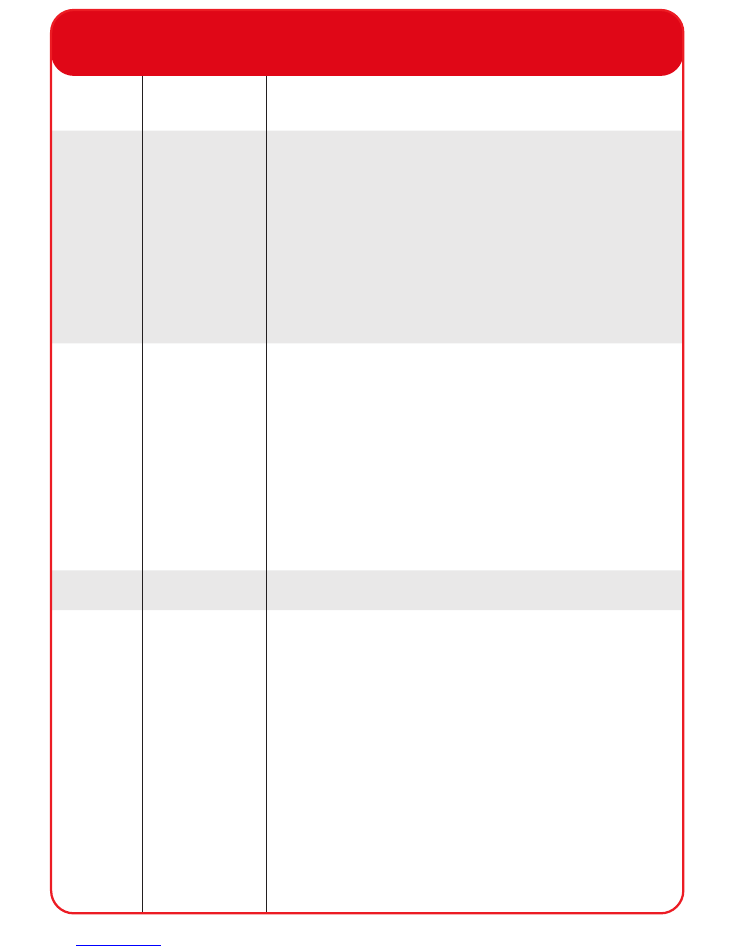
Fault Rectification Continued
14
No action required.
It is recommended that the detector is replaced for new.
Note: Where temporary work involving the generation of
dust, smoke, paint spray, and other aerosols is to be carried
out in an area protected by smoke detectors, the supplied
dust covers must be temporarily fitted to prevent
contamination or false alarms. The devices should also be
temporarily disabled at the Control Panel. Care must also be
taken to ensure that the dust covers are removed and the
devices re-enabled once the environment is clear.
Warning: DO NOT open the case to clean inside the detector.
Check device is free from smoke. If no smoke can be seen, it
is recommended that the detector is replaced for new. Note:
Where temporary work involving the generation of dust,
smoke, paint spray, and other aerosols is to be carried out in
an area protected by smoke detectors, the supplied dust
covers must be temporarily fitted to prevent contamination
or false alarms. The devices should also be temporarily
disabled at the Control Panel. Care must also be taken to
ensure that the dust covers are removed and the devices
re-enabled once the environment is clear.
Warning: DO NOT open the case to clean inside the detector.
Check the devices glass is in tact.
Ensure that the environment of the devices location is free of
smoke residue and dust.
Detector
Detector
Detector
Call Point
Detector
Signal strength
good
Head dirty
Pre alarm
Alarm
Alarm
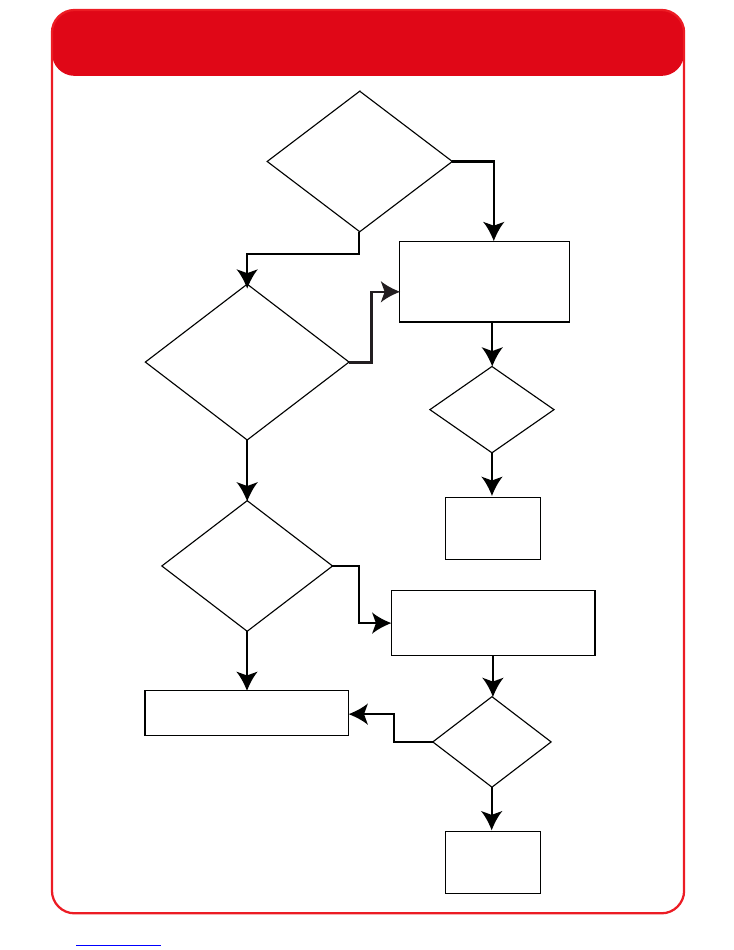
15
Reposition the device
in the correct location
and re-check the signal
levels.
Signal Levels
successfully
improved.
Carry out a survey to
re-check signal levels.
Is there
metalwork /
electrical equipment
near the unit, contrary to the
device installation
instructions?
Has the device
been installed in the
correct location as per
the survey?
Are the
signal levels ok
now?
NO
YES
YES
YES
Is the
device
allocated to the
correct/closest
RCC?
Re-allocate device to correct
/ closest RCC and re-check
signal levels.
Are
signal levels
now ok?
Signal Levels
successfully
improved.
YES
NO
YES
NO
NO
How to Improve Signal Levels

16
www.emsgroup.co.uk
Third Party Accredited
ISO 9001 ISO 13485 ISO 14001
The information contained within this literature is correct at time of publishing. The EMS Security Group Ltd reserves the right to change any information regarding products as
part of its continual development enhancing new technology and reliability. The EMS Group advises that any product literature issue numbers are checked with its head office
prior to any formal specification being written.